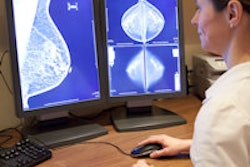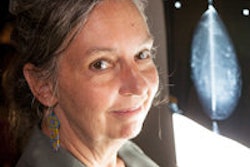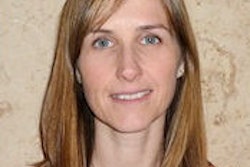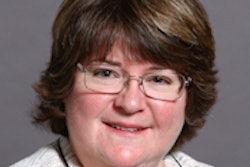The evolution of breast imaging has made mammography technologists much more than just "button pushers," with their role evolving to include not only more patient interaction but also more education and training, according to a March 16 presentation at the National Consortium of Breast Centers (NCoBC) meeting in Las Vegas.
And mammography technologists need to step up their game, said presenter Terry Bucknall, director of women's imaging services at Henry Mayo Newhall Hospital's Sheila R. Veloz Breast Center in Valencia, CA.
"Mammography technologists aren't just button pushers," Bucknall told session attendees. "The position is much more complicated now, due to technology advances, each modality's requirements, and patient interaction."
Ch-ch-changes
Much has changed in breast imaging in the past decades, including the establishment of dedicated breast imaging/cancer treatment centers -- which now include dedicated mammographers and patient navigation -- as well as more intensive patient-technologist interactions and technologist education, Bucknall said.
Breast imaging technology has also dramatically evolved. Dedicated analog mammography devices appeared in the late 1980s and early 1990s; the first full-field digital mammography unit was cleared for the U.S. market in 2000. Now, with the advent of digital breast tomosynthesis, screening ultrasound, dose monitoring, options for stereotactic biopsies, and density software, technologists are in yet another learning curve.
The position is more hands-on now, according to Bucknall. Radiologists depend on technologists' understanding of billing codes, their mastery of imaging technology and PACS, and their ability to troubleshoot the integration of the electronic medical record and RIS. This is on top of technologists' follow-through on data collection and mammography reporting, patient reminder letters and communication, quality control measures, and record keeping for the Mammography Quality Standards Act (MQSA) and other programs such as the National Quality Measures for Breast Centers (NQMBC) and the National Accreditation Program for Breast Centers (NAPBC).
"Technologists are collecting much more patient information than, say, age of menstruation, number of pregnancies, and breast cancer history," Bucknall said. "They're taking detailed family histories and determining women's high-risk indicators. And they're able to develop ongoing relationships, since often women see the same technologist each year or for follow-up procedures."
Technologists now perform an expanded and crucial role in patient education, Bucknall said. Women learn about the differences between 2D and 3D mammography from technologists, as well as about breast density and ensuing imaging recommendations, genetic testing, and radiation management.
"Techs can dispel the myths women have about breast imaging, fill in knowledge gaps, and address radiation concerns," she said.
Stepping up
How can mammography technologists thrive in this new environment? Bucknall had five suggestions:
- Know and understand the needs of the community your practice serves. "Patients' cultural and social status may influence their compliance with annual screening mammograms," Bucknall said. "Technologists who understand what their community needs will adapt easier to updated technologies and be able to educate their patients."
- Become familiar with new technologies. "Most of what we do today is managed by digital technology," she said. "Techs must know how to manage patient electronic medical records, including the storage and retrieval of medical images via PACS, downloading and burning images to disks, troubleshooting software errors, and understanding interfaces that connect modalities and how they function."
- Cross-train, i.e., make sure you're proficient not only in conventional mammography, but also in tomosynthesis, ultrasound (both screening and diagnostic), automated breast ultrasound, stereotactic biopsy, and dual x-ray absorptiometry (DEXA) for measuring bone mineral density. "Seamless patient care is improved when technologists are able to perform all of the exams that are necessary during the patient visit. Technologists are more valuable to their organization -- and can better develop their own resume -- by learning as much as they can," Bucknall said.
- Get additional certifications from the American Registry of Radiologic Technologists (ARRT), such as quality management, breast sonography, and breast health navigation/coordination.
- Attend conferences. "Techs should take advantage of opportunities that encourage growth, networking, and education in their field," Bucknall told session attendees. "Learning as much as possible about the patient's journey from diagnosis to treatment and survivorship makes technologists valuable caregivers. Attending conferences also gives mammography techs confidence in their skills and brings awareness to the processes and techniques that they need to improve."
The bottom line? Mammography technologists are much more than just the person who performs mammograms, according to Bucknall.
"Techs are experts in their field who have adapted to many changes over the years and are dedicated to women's health," she concluded.




















